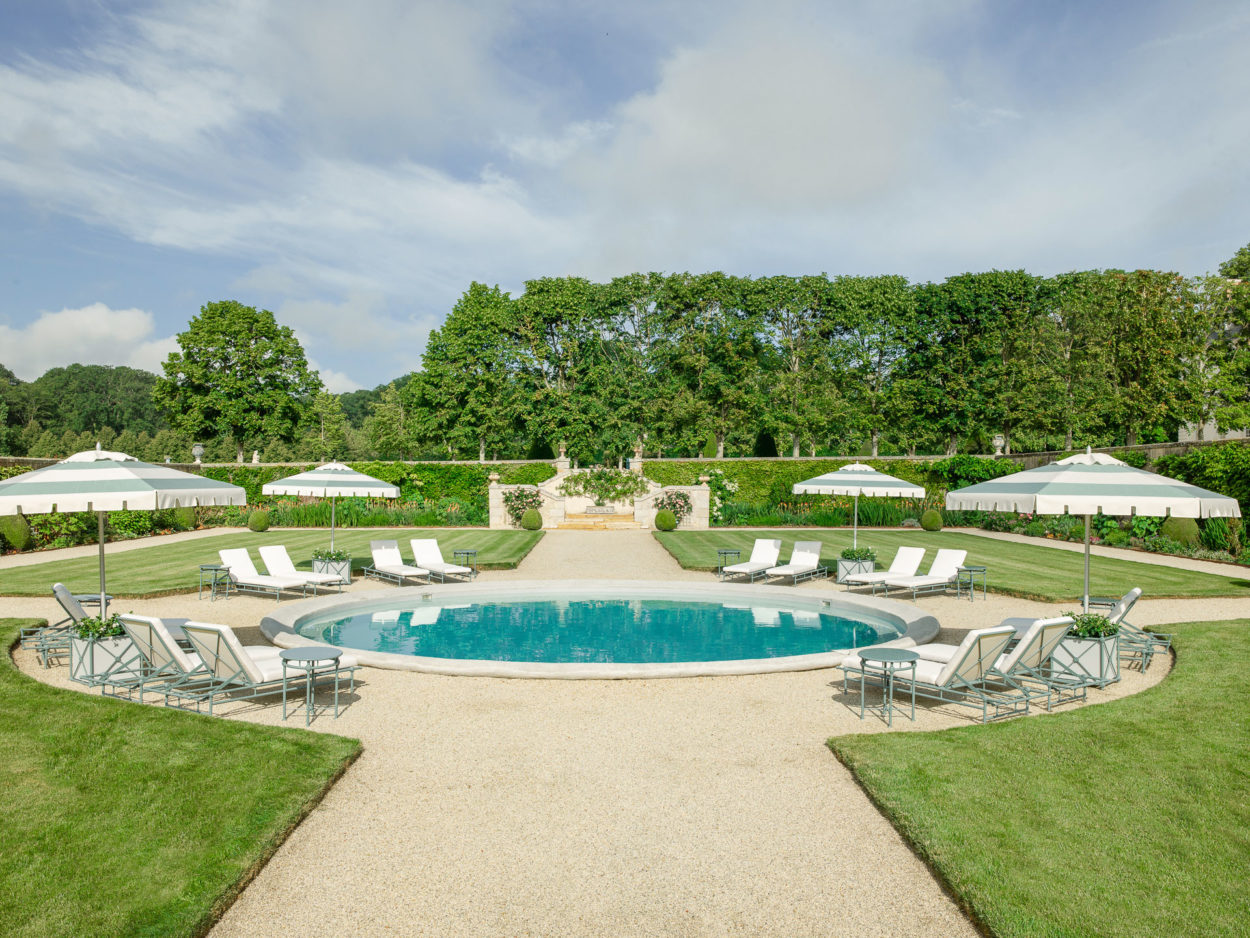Surrounded by the original medieval wall, the private grounds and gardens of Château du Grand-Lucé feel like a proper kingdom, in the northern region of the Loire Valley. Remaining true to French classicism, and inspired by the gardens at Versailles, the Château’s gardens were designed on a north-south axis, with the formal gardens closest to the Château, and with the grounds becoming progressively less structured nearer the woods.
The classic gardens are a brilliant feat of order and symmetry with near perfect structure. The central allée, finely manicured boxwoods, delightful topiaries and immaculately trimmed expanses of green grass are extraordinary. At a slightly lower elevation, and surrounded by walls protecting the area from wind, is the Jardin Exotique. This extravagant garden remains incredibly warm, receiving the most of the Loire Valley sunshine. Planted with a brilliant variety of flowers, the exotic garden has a stunning swimming pool, original working greenhouses and the quintessential orangerie — protecting a multitude of citrus in the winter and open for infinite possibilities in the warmer months.

Below the parterre of the classic gardens is an exquisite potager garden (kitchen garden) and orchards filled with an incredible Loire Valley bounty — haricots verts, tomatoes of nearly uncountable varieties, lettuces, artichokes, dozens of herbs, lavender, stone fruits, apples and pears. Beyond the potager garden, there are acres upon acres to explore — a lake, meadows, grasslands, a historic white oak forest with a circular clearing in the center (as designed in 1760). The pièce de résistance is found in this clearing — a statue of Proserpine, daughter of Zeus, one of seven statues placed throughout the grounds by King Louis XV as a housewarming gift to Baron Jacques Pineau de Viennay.
Nearer the main château there are multiple buildings and courtyards — the original stables, now the grand ballroom, the original laundry house, now the spa and fitness center, and many yet-to-be restored buildings in various states of faded grandeur that are exceptionally lovely in their authenticity – providing an almost museum-like glimpse of noble life centuries ago.


